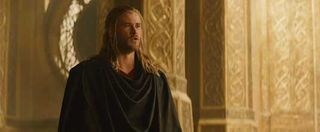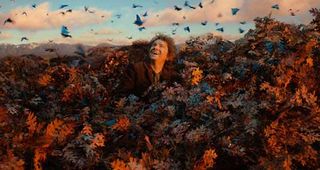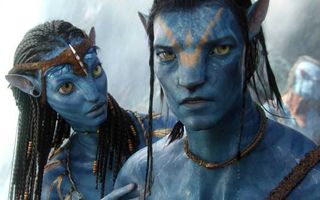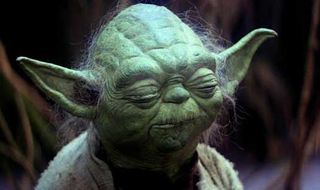The next wave of cinematic innovations
Digital and 3D technlogies have revolutionised movie making and viewing - but you ain't seen nothing yet. Get ready for the next wave of cinematic innovations, says Will Strauss.
From synchronous sound to the steadicam, technology has had a profound influence on movies and filmmaking - but it never stays still for long.
It's only a few years since the idea of filming a Hollywood movie in digital alone seemed like a brave experiment; now it's the norm. New stereoscopic technology has revived the 3D movie like never before, although the jury's still out about whether it will survive as a mainstream part of filmmaking or be eventually discarded as an overused gimmick. So what's next?
Here, Will Strauss pinpoints seven new cinematic innovations that promise to change the way we make and watch movies yet again...
01. Immersive audio

Some 35 years after 5.1 surround sound was introduced - and 20 years after it became commonplace - the film industry is now embracing a new sound experience: Immersive Audio.
The current theatrical battle is between two differing technologies. Dolby’s Atmos directional audio makes it "easy to match sound precisely to the action on screen" while Barco’s Auro 11.1 three-layer sound immersion is said to be "the best natural listening experience", one that is "more relaxing to the brain, [offering] less ear-fatigue".
Atmos vs Auro
Peter Jackson-endorsed Dolby Atmos works by adding dynamic audio objects to traditional audio channels. These audio objects allow a filmmaker to control discrete sound elements in the theatre, regardless of how the speakers are configured.
Auro 11.1, on the other hand, used by Skywalker Sound, can be recorded on set or achieved in post-production.
Don’t expect both to survive, though. Currently, if movie studios want to release films in both formats they have to do two separate mixes. This can’t last. A bit like the VHS vs Betamax tape battle from the 1980s, there can only be one winner.
- FACT: Elysium was released in both Auro 11.1 and Dolby Atmos.
02. Anamorphic widescreen

First introduced in 1955 by 20th Century Fox, anamorphic (or CinemaScope) is a widescreen format that is a size and shape ratio of 2.39 to 1 (2.39 bits across for every 1 bit up). After years in the wilderness, it’s making a return.
"We're essentially seeing the same pattern that we saw in the 50s after the original debut of 3D had died off," says cinematographer Stephen Murphy. "There is a switch to widescreen anamorphic photography and a resurgence in large format photography of 65mm film and above, with many of the tent pole releases receiving IMAX blow ups in key cities much like the blockbusters in the 70s and 80s would receive 70mm prints for special venues in larger markets."
Why now?
The reason anamorphic is making a comeback is because digital cameras are now capable of working this way and new lenses have been developed accordingly.
Where previously non-film cameras would crop and enlarge an image to achieve a not-quite-as-satisfactory 2.39:1 screen aspect ratio, Anamorphic's patented method uses all the available image area and then doubles it horizontally for twice the screen resolution and twice the picture width of a conventional cinema release print.
Get the Creative Bloq Newsletter
Daily design news, reviews, how-tos and more, as picked by the editors.
- FACT: Thor: The Dark World was shot on the ARRI Alexa digital camera using Panavision anamorphic lenses.
03. Computational cinematography
New technologies for sensing (and capturing) pictures are popular. One example is the Plenoptic Lightfield system.
Unlike a standard camera lens, a Plenoptic one consists of hundreds of micro-lenses that capture a slightly different area of a picture. This gives a filmmaker the ability to select camera focus, zoom, exposure and other shot variables during the post-production process of a film rather than during its production.
- FACT: The camera manufacturer Red is reputed to be working on a camera using this technology.
04. High Frame Rates (HFR)

Did you see The Hobbit? Did it look hyper-real? That will be because it was shot with a higher frame rate. A what? While most films are shot at 24 frames per second (fps), the Tolkien adaptation was shot at 48fps.
48fps is considered to be a much more accurate mirror of how our eyes work, and therefore less of a strain than 24fps which requires the brain to automatically fill in some gaps.
It also improves the picture quality when shooting with digital cameras. But not everyone likes the enhanced reality look and the effect certainly isn’t appropriate for all features.
Phil Clapp, president of the International Union of Cinemas (UNIC), says: "The audience response [to The Hobbit] might have been mixed, but there were many examples of audience numbers increasing because of the technology, and we could charge a premium for the experience."
- FACT: The King Kong attraction at Universal Studios uses 60fps.
05. Simulcam

Developed for James Cameron on Avatar, Simulcam is a CG-meets-live-action camera rig that uses motion-capture techniques originally devised for video games.
A special suit covered in reflective markers captures an actor’s movement. Then, using images from bespoke cameras, a computer calculates the motion of the actor and mirrors it on a CG character.
The impact of this is that rather than having to wait until the post-production stage, CG images can be instantly placed in front of green screen backgrounds and alongside real-life actors, allowing a director to direct the performance as if all the characters were there on set.
- FACT: Director Bryan Singer is using Simulcam on X-Men: Days of Future Past.
06. Live CG
In the much the same vein as Simulcam, Lucasfilm has its own CG-meets-live-action directing and production innovation in which scenes are rendered out in real-time, using motion capture again, to allow graphics to be layered over live action.
Speaking at a BAFTA event in London last week, Lucasfilm chief technology strategy officer Kim Libreri said: "If you combine video games with film-making techniques, you can start to have these real deep, multi-user experiences. Being able to animate, edit and compose live is going to change the way we work and it's really going to bring back the creative experience in digital effects."
- FACT: Industrial Light & Magic is currently testing this technology.
07. The return of film

Another innovation experiencing a resurgence is celluloid film itself. With Kodak having come out of bankruptcy, big studio and independent features alike are being shot on 35mm film and distributed digitally.
Why? Because for all technology’s development over the years, film still displays higher resolution and higher colour fidelity.
As many cinematographers will argue, it's also better for skin tones, quicker to shoot with on set, and the cameras are better suited to the rigours of shooting on location. So will the future of film be (partly) a return to its past? Stranger things have happened...
FACT: Star Wars: Episode VII will be shot on 35mm film.
Looking ahead
For all its ups and downs over the years, cinema is constantly evolving, led and inspired by technology. And there's absolutely no reason to expect that to change anytime soon.
New movie making equipment and techniques are constantly being developed, often - as with companies such as Red - with the direct involvement of the directors themselves. All in all, the future of movie making has never been so exciting or unpredictable.
Words: Will Strauss
Will Strauss is a freelance journalist, editor and designer based in Leeds. He has nearly 15 years experience of producing content appropriate for newspapers, magazines, radio, mobile and the web. Check out his website for more details.
Delivered in conjunction with ZED!
This content was produced in collaboration with HP & Intel as part of ZED - a Pop-Up Studio for the Creative Community held in Soho, London. For more information about ZED and any future events see here.

Thank you for reading 5 articles this month* Join now for unlimited access
Enjoy your first month for just £1 / $1 / €1
*Read 5 free articles per month without a subscription

Join now for unlimited access
Try first month for just £1 / $1 / €1
The Creative Bloq team is made up of a group of design fans, and has changed and evolved since Creative Bloq began back in 2012. The current website team consists of eight full-time members of staff: Editor Georgia Coggan, Deputy Editor Rosie Hilder, Ecommerce Editor Beren Neale, Senior News Editor Daniel Piper, Editor, Digital Art and 3D Ian Dean, Tech Reviews Editor Erlingur Einarsson, Ecommerce Writer Beth Nicholls and Staff Writer Natalie Fear, as well as a roster of freelancers from around the world. The ImagineFX magazine team also pitch in, ensuring that content from leading digital art publication ImagineFX is represented on Creative Bloq.
